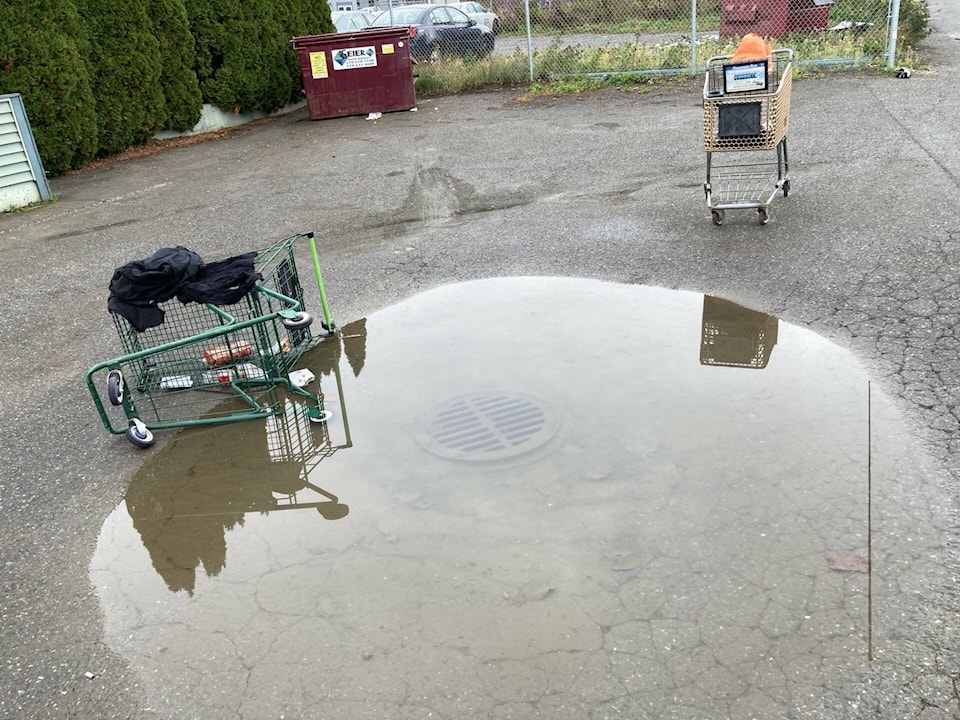Terrace’s homeless count has soared nearly 50 per cent in the past year, results released from a BC Housing survey indicate.
In the 24-hour period of the annual April 11 survey, the homeless count went from 107 people last year, to 156 people this year.
The increase is even more dramatic considering the survey counted 96 people in 2018, then dipped to lower counts of 71 and 74 in the two following years.
The increase also came at a time when the Ksan Society, which conducted the count under contract to the Homelessness Services Association of B.C., expanded its services to homeless people by purchasing and extensively renovating the former Elks Hall on Tetrault Street, across the streets from the new Mills Memorial Hospital now under construction.
BC Housing followed in early May, announcing its purchase of the former Mumford’s Lodge motel of 19 units for $2.75 million to assist people who had lived in the Coachman Apartments. That building became uninhabitable owing to mold, burst water pipes and failing maintenance.
Fully 84 per cent of those counted this year identified as Indigenous, up slightly from 79 per cent in 2022.
That’s approximately four times the percentage of people who identified as Indigenous in the last census.
There was no racial identity list for eight per cent of respondents while one per cent identified as Black.
More than half, or 56 per cent of respondents were men, 41 per cent were women and three per cent were of another gender identity.
People under the age of 25 made up 13 per cent of this year’s count, while 66 per cent of the people were between 25 to 54 and 21 per cent were people over 55 years of age.
Of those who responded this year, 81 per cent said they had been in the community for more than one year with 60 per cent saying they had been in the community for five years or more. More than one-quarter — 29 per cent — said they have always lived here.
That’s a crucial set of numbers inasmuch as the subject of homeless people’s origins came up when the Ksan Society presented last year’s count to the City of Terrace council.
Councillors were curious to know the hometowns of those who responded in 2022, given the persistent rumours that Terrace has become a place of residence for people throughout the region.
“Compared to 2022, fewer respondents have been in the community for less than one year, suggesting many people experiencing homelessness in the community were in the community the last time they were housed,” explanatory information accompanying the statistics indicated.
Those preparing questions for homeless counts use precise definitions, such that homelessness is defined as when people don’t have a place of their own where they pay rent and expect to stay for 30 days or longer.
People were considered ‘sheltered’ if, on the night of the count, they were in a homeless shelter, a transition house, in jail, in hospital or in a detox facility.
People were considered ‘unsheltered’ if they stayed outside in alleys, doorways or were couch surfing.
Of unsheltered respondents this year, 36 per cent stayed outside, 26 per cent were at someone else’s place and 20 per cent were in a makeshift shelter or tent.
One third, or 32 per cent, list substance use as a reason for housing loss while 30 per cent say they do not have enough money and 24 per cent cite a conflict with a spouse or partner.
Quoted percentages are based on the number of respondents to each question, not on the total people who were counted.
The Homelessness Services Association of B.C. cautions that the number of people counted does not represent the entire homeless population.
